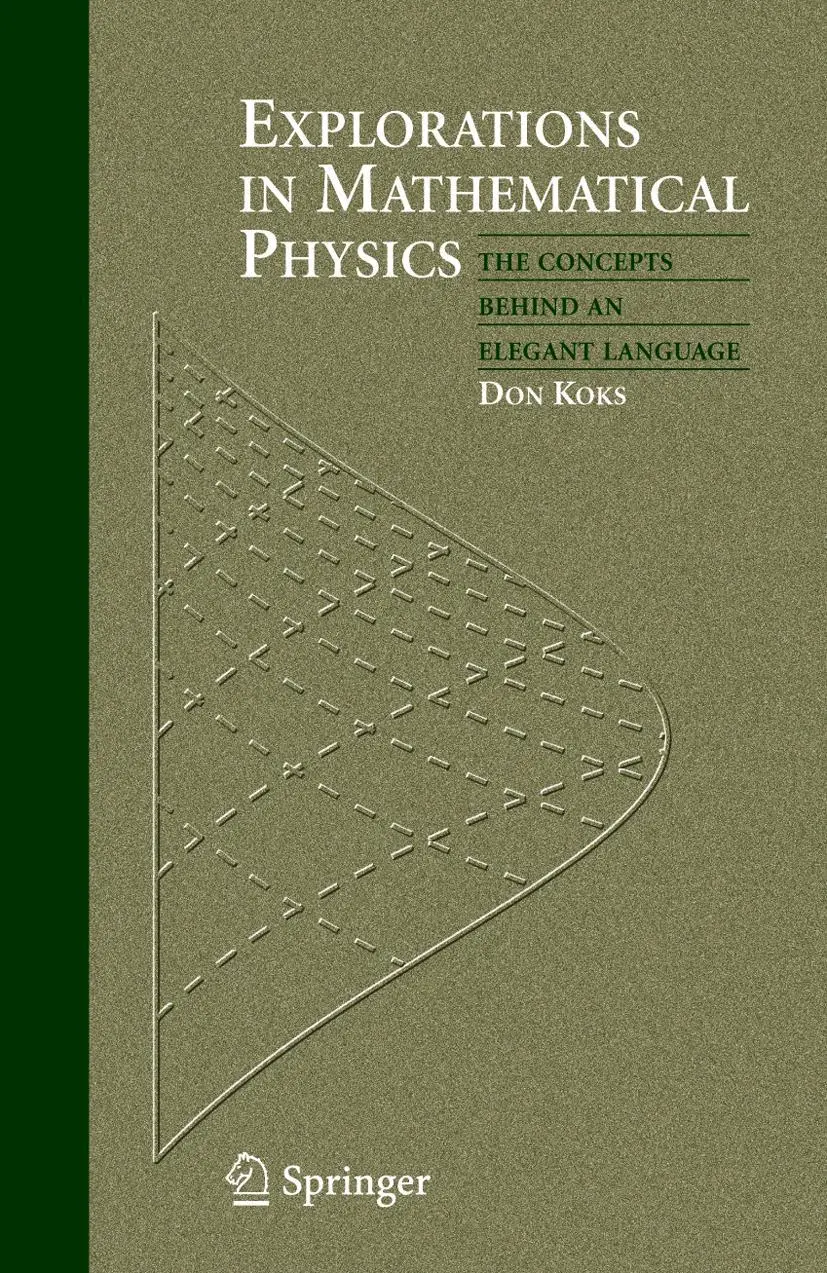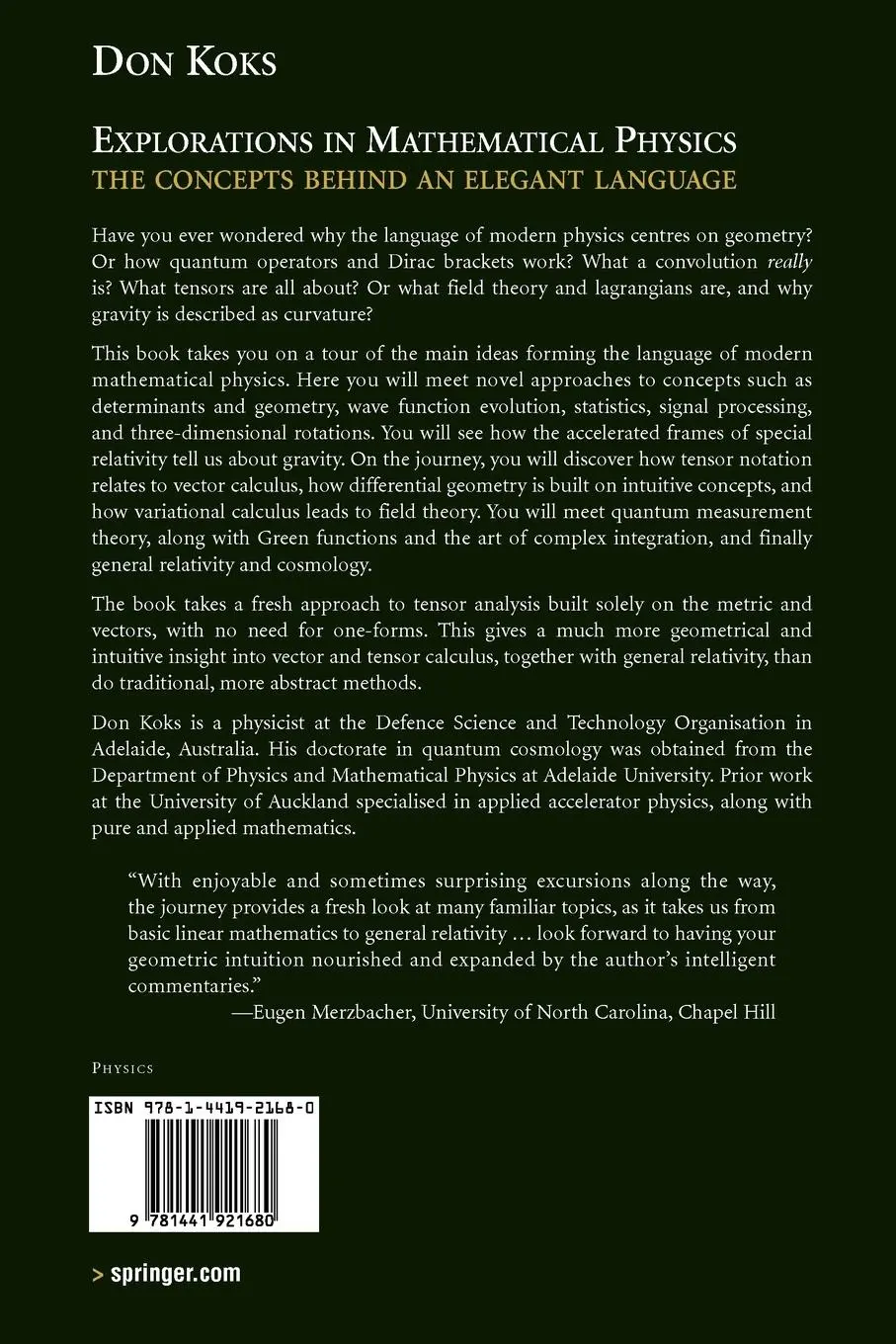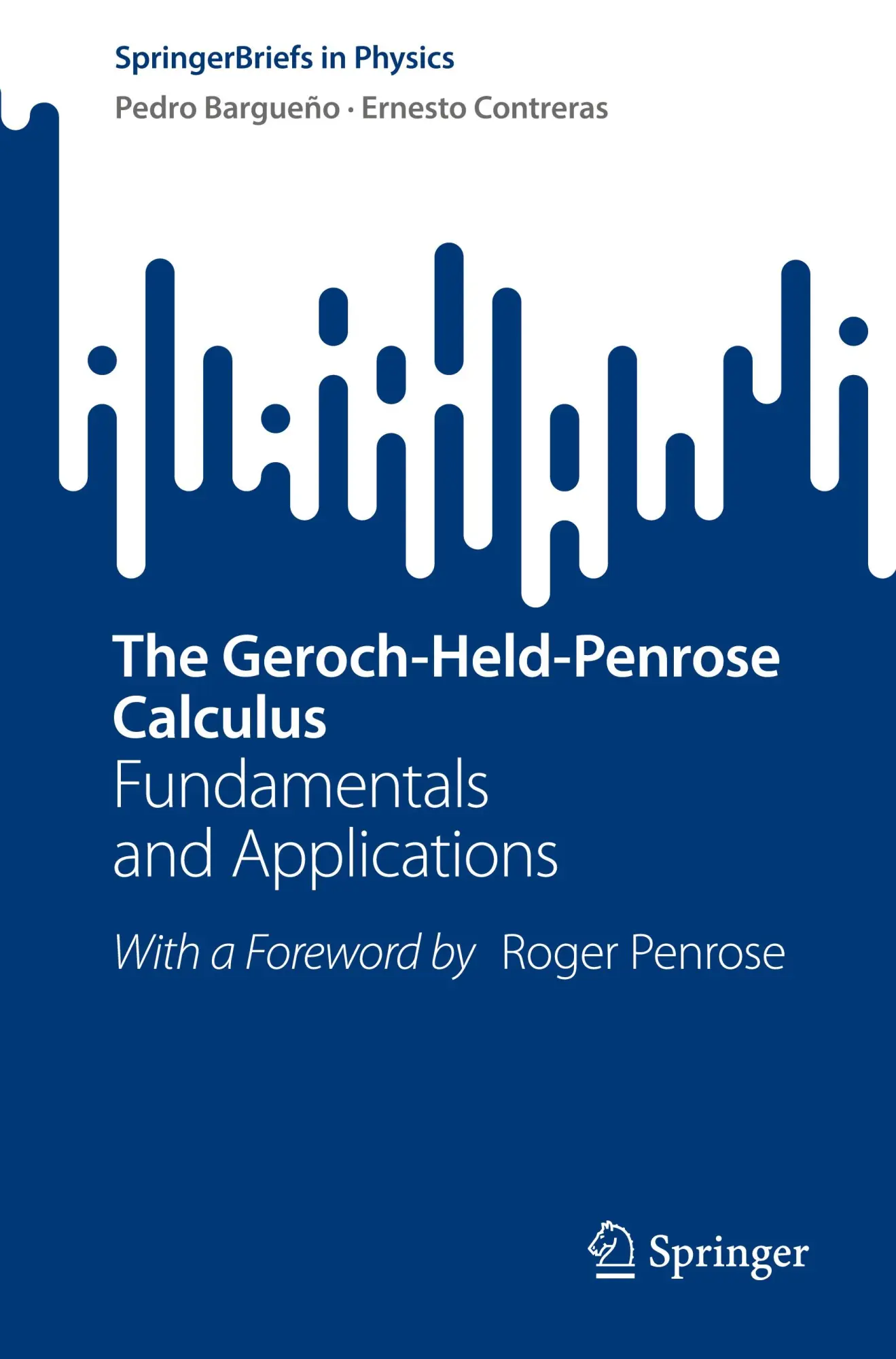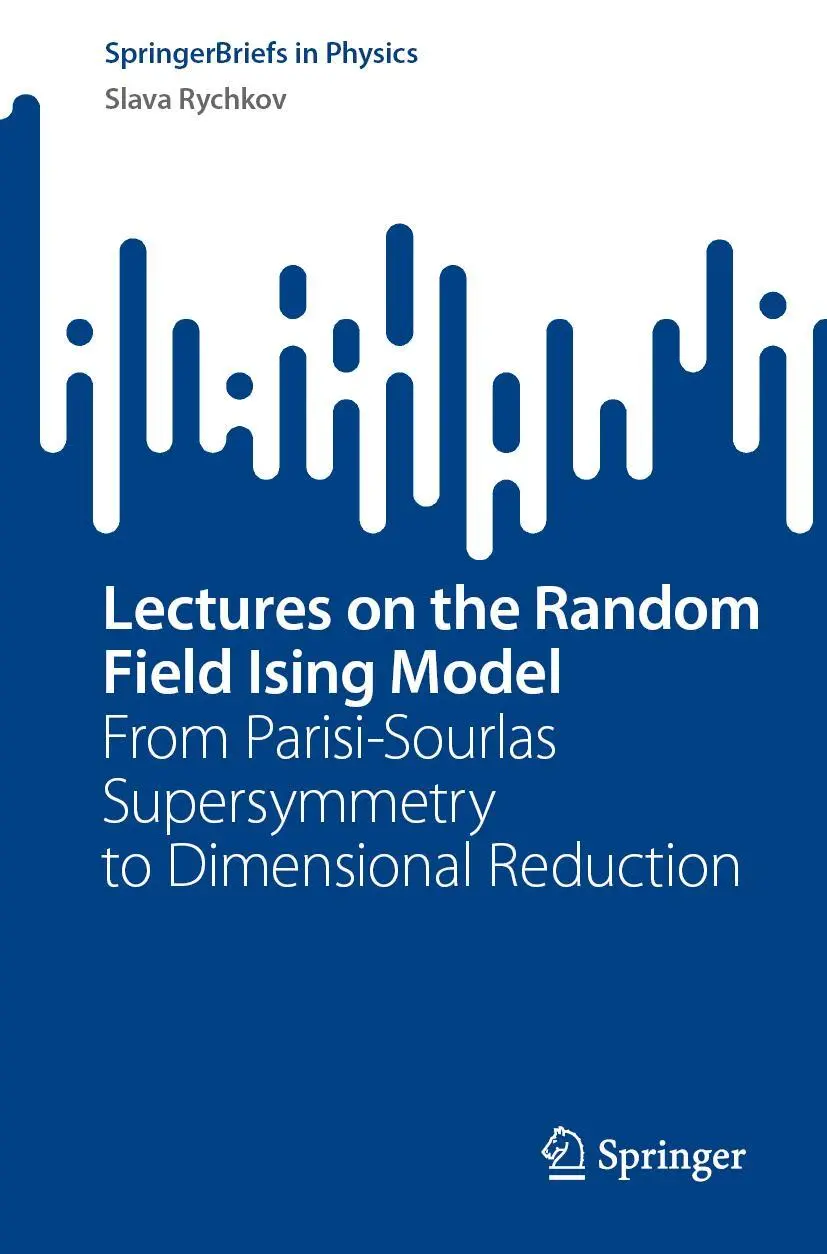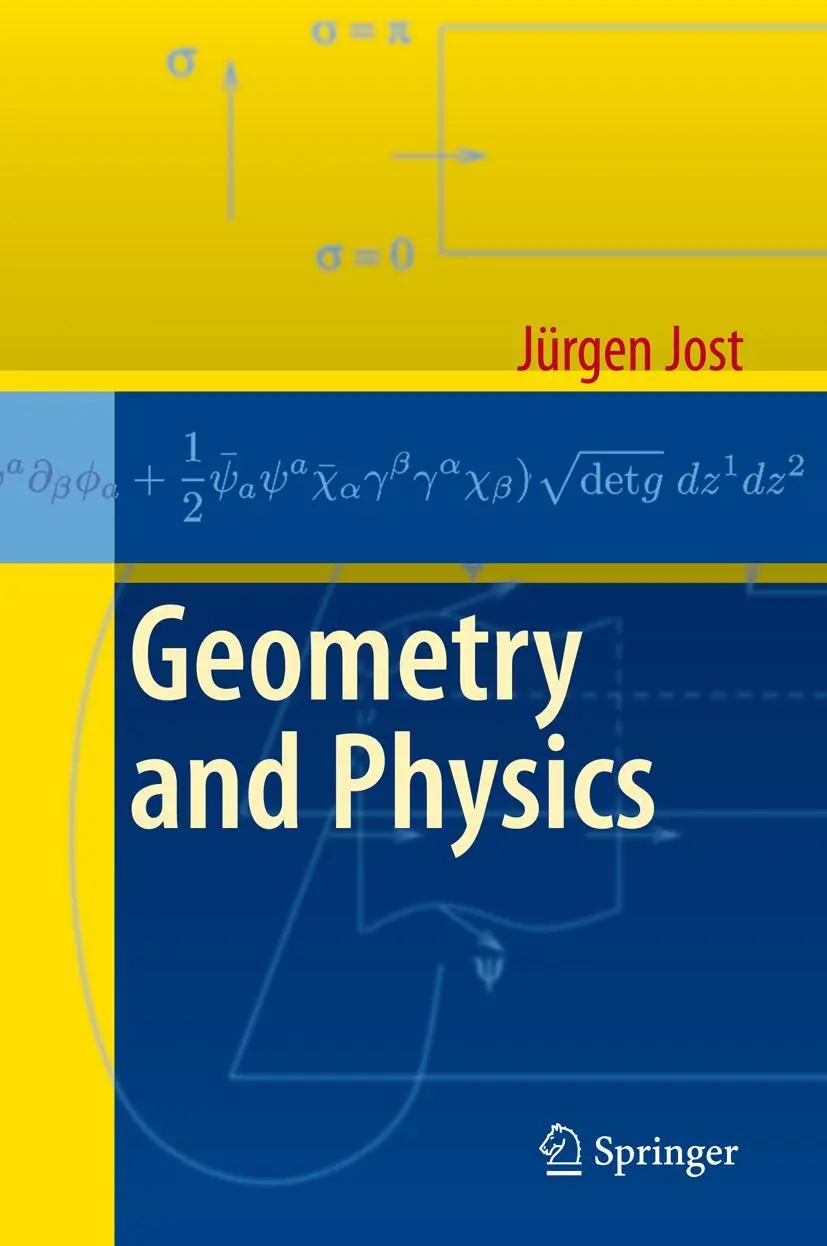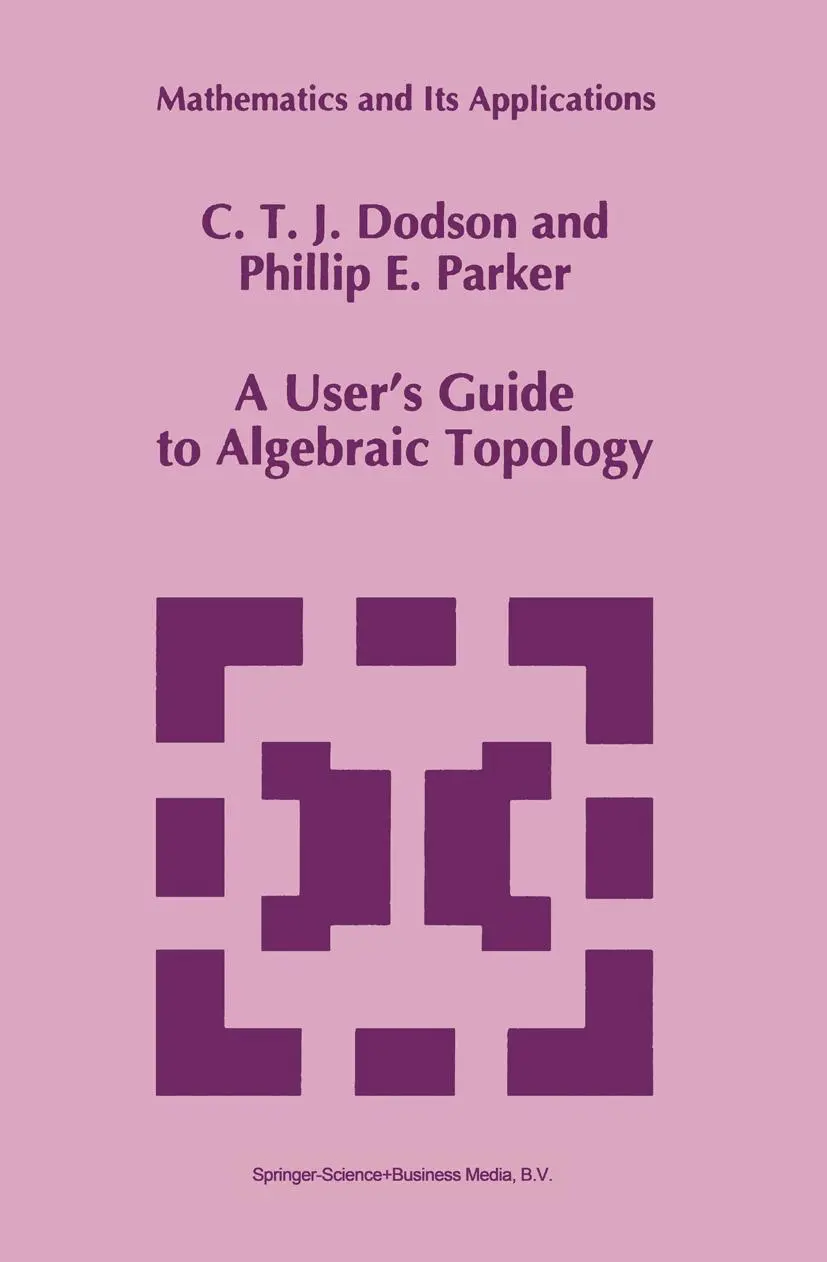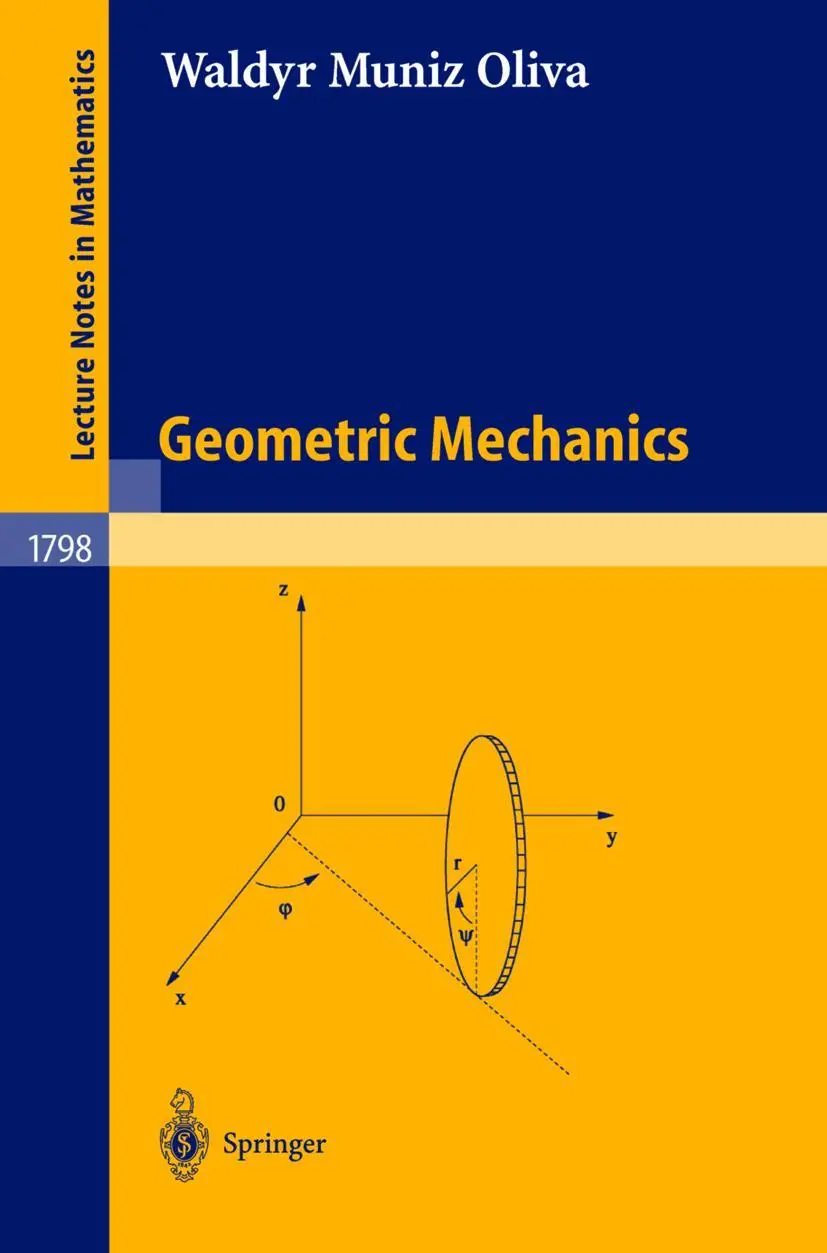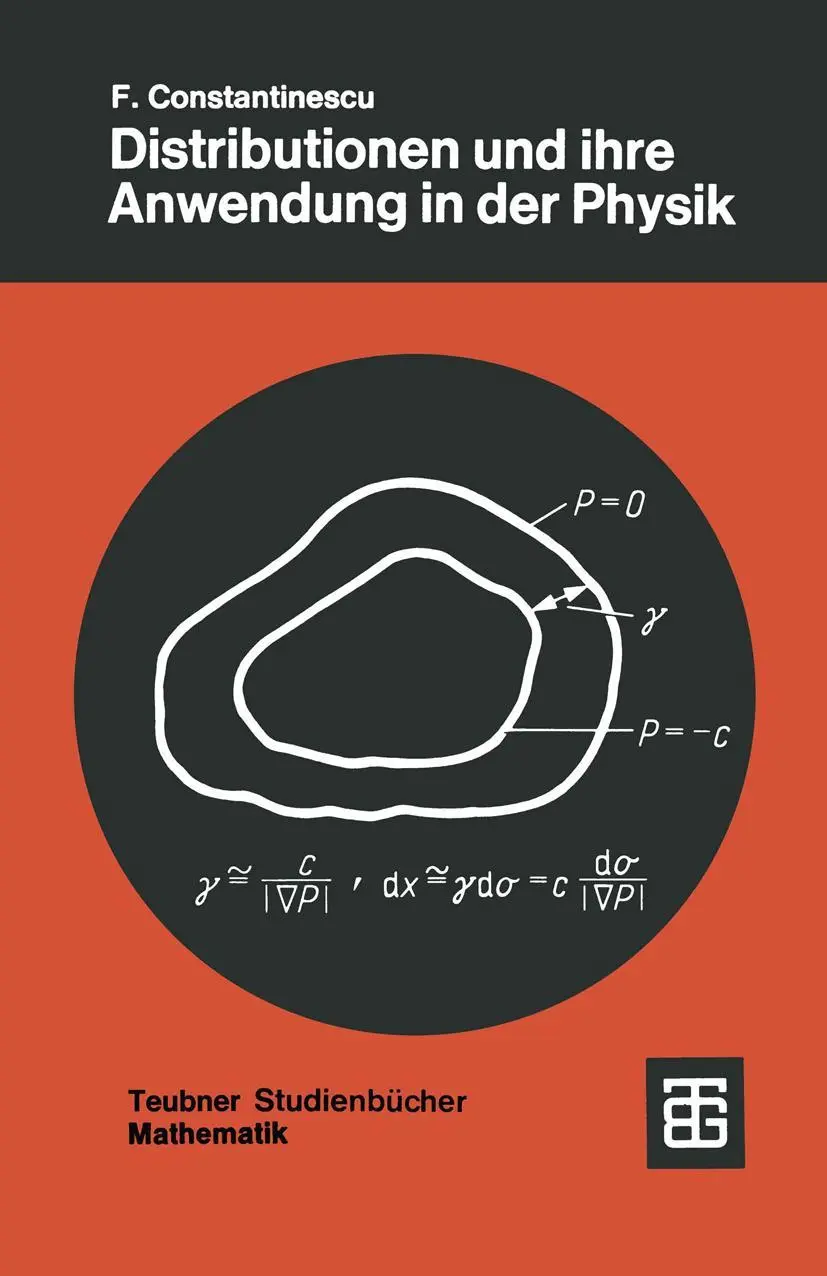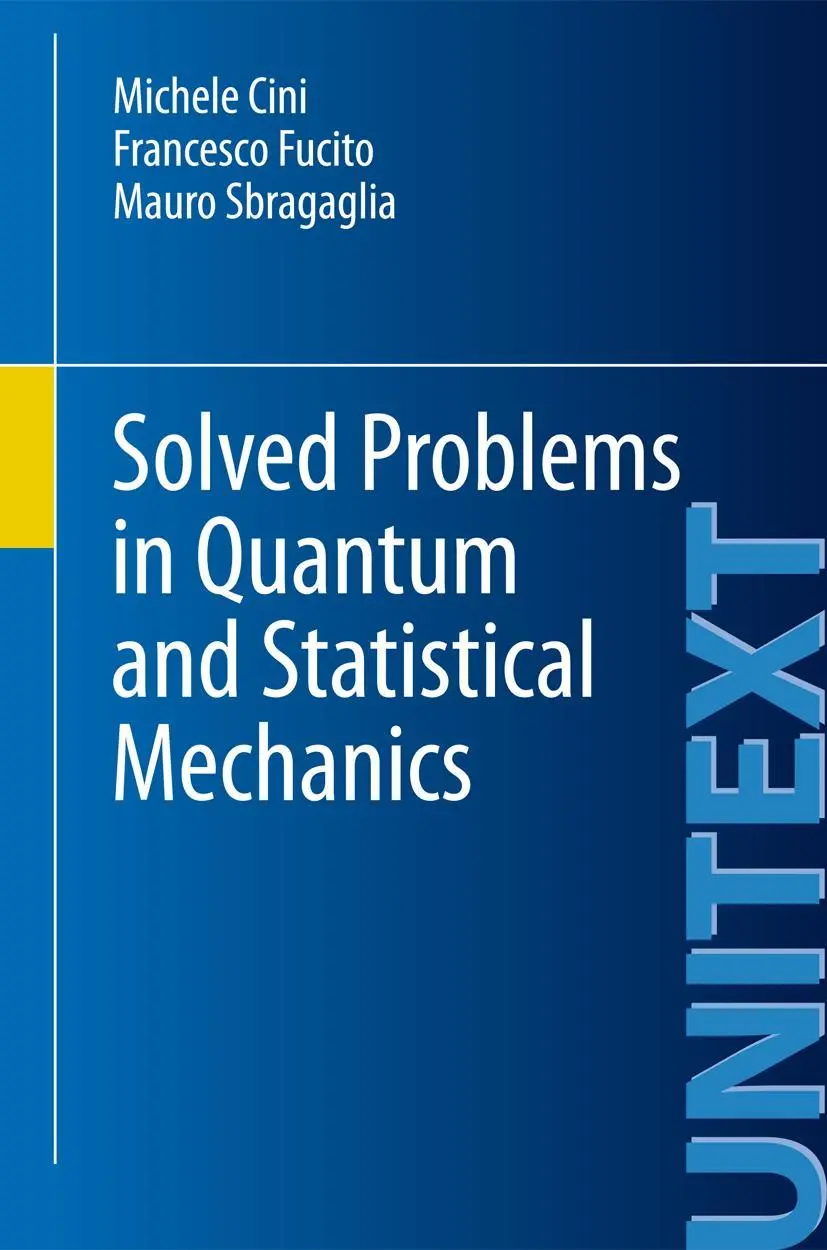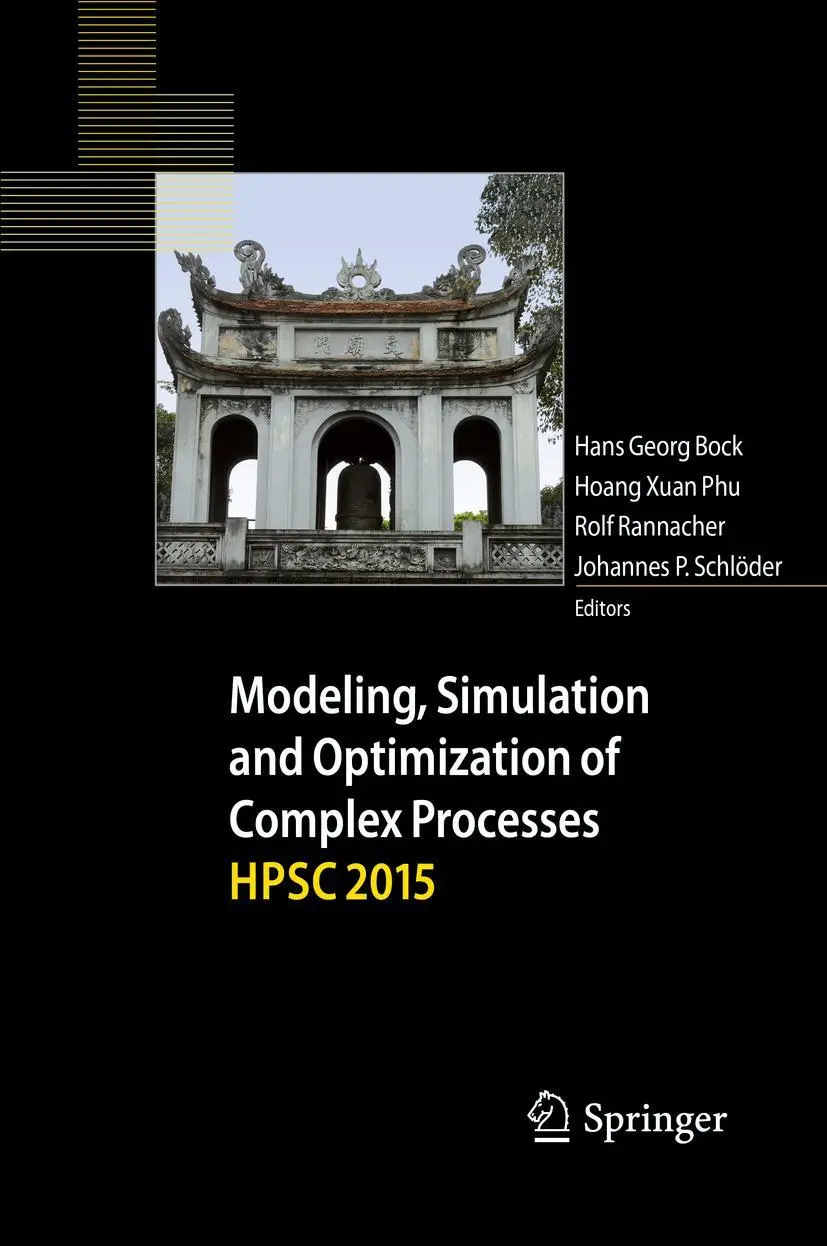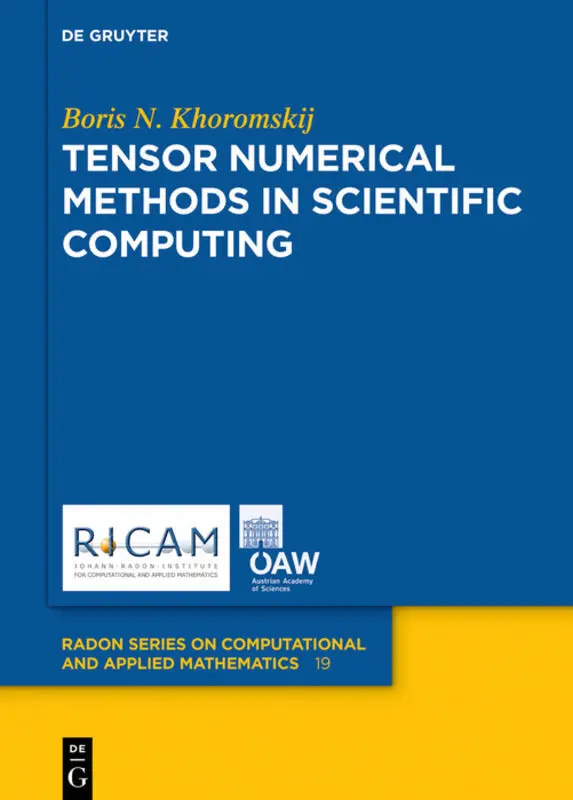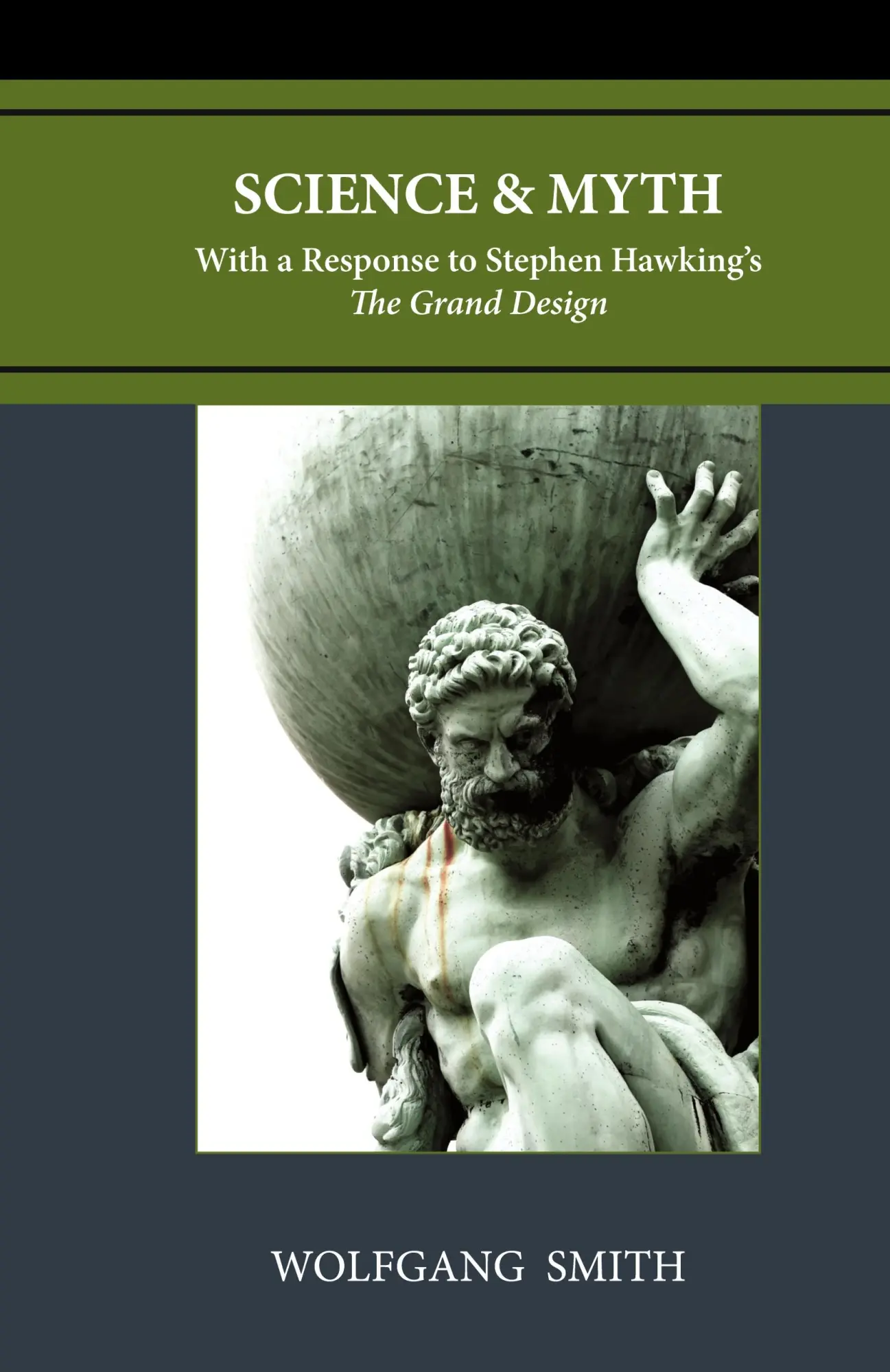Dekorationsartikel gehören nicht zum Leistungsumfang.
Sprache:
Englisch
69,54 €*
Versandkostenfrei per Post / DHL
Aktuell nicht verfügbar
Kategorien:
Beschreibung
Have you ever wondered why the language of modern physics centres on geometry? Or how quantum operators and Dirac brackets work? What a convolution really is? What tensors are all about? Or what field theory and lagrangians are, and why gravity is described as curvature?
This book takes you on a tour of the main ideas forming the language of modern mathematical physics. Here you will meet novel approaches to concepts such as determinants and geometry, wave function evolution, statistics, signal processing, and three-dimensional rotations. You'll see how the accelerated frames of special relativity tell us about gravity. On the journey, you'll discover how tensor notation relates to vector calculus, how differential geometry is built on intuitive concepts, and how variational calculus leads to field theory. You will meet quantum measurement theory, along with Green functions and the art of complex integration, and finally general relativity and cosmology.
The book takes a fresh approach to tensor analysis built solely on the metric and vectors, with no need for one-forms. This gives a much more geometrical and intuitive insight into vector and tensor calculus, together with general relativity, than do traditional, more abstract methods.
Don Koks is a physicist at the Defence Science and Technology Organisation in Adelaide, Australia. His doctorate in quantum cosmology was obtained from the Department of Physics and Mathematical Physics at Adelaide University. Prior work at the University of Auckland specialised in applied accelerator physics, along with pure and applied mathematics.
This book takes you on a tour of the main ideas forming the language of modern mathematical physics. Here you will meet novel approaches to concepts such as determinants and geometry, wave function evolution, statistics, signal processing, and three-dimensional rotations. You'll see how the accelerated frames of special relativity tell us about gravity. On the journey, you'll discover how tensor notation relates to vector calculus, how differential geometry is built on intuitive concepts, and how variational calculus leads to field theory. You will meet quantum measurement theory, along with Green functions and the art of complex integration, and finally general relativity and cosmology.
The book takes a fresh approach to tensor analysis built solely on the metric and vectors, with no need for one-forms. This gives a much more geometrical and intuitive insight into vector and tensor calculus, together with general relativity, than do traditional, more abstract methods.
Don Koks is a physicist at the Defence Science and Technology Organisation in Adelaide, Australia. His doctorate in quantum cosmology was obtained from the Department of Physics and Mathematical Physics at Adelaide University. Prior work at the University of Auckland specialised in applied accelerator physics, along with pure and applied mathematics.
Have you ever wondered why the language of modern physics centres on geometry? Or how quantum operators and Dirac brackets work? What a convolution really is? What tensors are all about? Or what field theory and lagrangians are, and why gravity is described as curvature?
This book takes you on a tour of the main ideas forming the language of modern mathematical physics. Here you will meet novel approaches to concepts such as determinants and geometry, wave function evolution, statistics, signal processing, and three-dimensional rotations. You'll see how the accelerated frames of special relativity tell us about gravity. On the journey, you'll discover how tensor notation relates to vector calculus, how differential geometry is built on intuitive concepts, and how variational calculus leads to field theory. You will meet quantum measurement theory, along with Green functions and the art of complex integration, and finally general relativity and cosmology.
The book takes a fresh approach to tensor analysis built solely on the metric and vectors, with no need for one-forms. This gives a much more geometrical and intuitive insight into vector and tensor calculus, together with general relativity, than do traditional, more abstract methods.
Don Koks is a physicist at the Defence Science and Technology Organisation in Adelaide, Australia. His doctorate in quantum cosmology was obtained from the Department of Physics and Mathematical Physics at Adelaide University. Prior work at the University of Auckland specialised in applied accelerator physics, along with pure and applied mathematics.
This book takes you on a tour of the main ideas forming the language of modern mathematical physics. Here you will meet novel approaches to concepts such as determinants and geometry, wave function evolution, statistics, signal processing, and three-dimensional rotations. You'll see how the accelerated frames of special relativity tell us about gravity. On the journey, you'll discover how tensor notation relates to vector calculus, how differential geometry is built on intuitive concepts, and how variational calculus leads to field theory. You will meet quantum measurement theory, along with Green functions and the art of complex integration, and finally general relativity and cosmology.
The book takes a fresh approach to tensor analysis built solely on the metric and vectors, with no need for one-forms. This gives a much more geometrical and intuitive insight into vector and tensor calculus, together with general relativity, than do traditional, more abstract methods.
Don Koks is a physicist at the Defence Science and Technology Organisation in Adelaide, Australia. His doctorate in quantum cosmology was obtained from the Department of Physics and Mathematical Physics at Adelaide University. Prior work at the University of Auckland specialised in applied accelerator physics, along with pure and applied mathematics.
Über den Autor
"With enjoyable and sometimes surprising excursions along the way, the journey provides a fresh look at many familiar topics, as it takes us from basic linear mathematics to general relativity¿ look forward to having your geometric intuition nourished and expanded by the author¿s intelligent commentaries."
Eugen Merzbacher, University of North Carolina, Chapel Hill
Have you ever wondered why the language of modern physics centres on geometry? Or how quantum operators and Dirac brackets work? What a convolution really is? What tensors are all about? Or what field theory and lagrangians are, and why gravity is described as curvature?
This book takes you on a tour of the main ideas forming the language of modern mathematical physics. Here you will meet novel approaches to concepts such as determinants and geometry, wave function evolution, statistics, signal processing, and three-dimensional rotations. You will see how the accelerated frames of special relativity tell us about gravity. On the journey, you will discover how tensor notation relates to vector calculus, how differential geometry is built on intuitive concepts, and how variational calculus leads to field theory. You will meet quantum measurement theory, along with Green functions and the art of complex integration, and finally general relativity and cosmology.
The book takes a fresh approach to tensor analysis built solely on the metric and vectors, with no need for one-forms. This gives a much more geometrical and intuitive insight into vector and tensor calculus, together with general relativity, than do traditional, more abstract methods.
Don Koks is a physicist at the Defence Science and Technology Organisation in Adelaide, Australia. His doctorate in quantum cosmology was obtained from the Department of Physics and Mathematical Physics at Adelaide University. Prior work at the University of Auckland specialised in applied accelerator physics, along with pure and applied mathematics.
Eugen Merzbacher, University of North Carolina, Chapel Hill
Have you ever wondered why the language of modern physics centres on geometry? Or how quantum operators and Dirac brackets work? What a convolution really is? What tensors are all about? Or what field theory and lagrangians are, and why gravity is described as curvature?
This book takes you on a tour of the main ideas forming the language of modern mathematical physics. Here you will meet novel approaches to concepts such as determinants and geometry, wave function evolution, statistics, signal processing, and three-dimensional rotations. You will see how the accelerated frames of special relativity tell us about gravity. On the journey, you will discover how tensor notation relates to vector calculus, how differential geometry is built on intuitive concepts, and how variational calculus leads to field theory. You will meet quantum measurement theory, along with Green functions and the art of complex integration, and finally general relativity and cosmology.
The book takes a fresh approach to tensor analysis built solely on the metric and vectors, with no need for one-forms. This gives a much more geometrical and intuitive insight into vector and tensor calculus, together with general relativity, than do traditional, more abstract methods.
Don Koks is a physicist at the Defence Science and Technology Organisation in Adelaide, Australia. His doctorate in quantum cosmology was obtained from the Department of Physics and Mathematical Physics at Adelaide University. Prior work at the University of Auckland specialised in applied accelerator physics, along with pure and applied mathematics.
Zusammenfassung
Have you ever wondered why the language of modern physics centres on geometry? Or how quantum operators and Dirac brackets work? What a convolution really is? What tensors are all about? Or what field theory and lagrangians are, and why gravity is described as curvature?
This book takes you on a tour of the main ideas forming the language of modern mathematical physics. Here you will meet novel approaches to concepts such as determinants and geometry, wave function evolution, statistics, signal processing, and three-dimensional rotations. You will see how the accelerated frames of special relativity tell us about gravity. On the journey, you will discover how tensor notation relates to vector calculus, how differential geometry is built on intuitive concepts, and how variational calculus leads to field theory. You will meet quantum measurement theory, along with Green functions and the art of complex integration, and finally general relativity and cosmology.
The book takes a fresh approach to tensor analysis built solely on the metric and vectors, with no need for one-forms. This gives a much more geometrical and intuitive insight into vector and tensor calculus, together with general relativity, than do traditional, more abstract methods.
Don Koks is a physicist at the Defence Science and Technology Organisation in Adelaide, Australia. His doctorate in quantum cosmology was obtained from the Department of Physics and Mathematical Physics at Adelaide University. Prior work at the University of Auckland specialised in applied accelerator physics, along with pure and applied mathematics.
This book takes you on a tour of the main ideas forming the language of modern mathematical physics. Here you will meet novel approaches to concepts such as determinants and geometry, wave function evolution, statistics, signal processing, and three-dimensional rotations. You will see how the accelerated frames of special relativity tell us about gravity. On the journey, you will discover how tensor notation relates to vector calculus, how differential geometry is built on intuitive concepts, and how variational calculus leads to field theory. You will meet quantum measurement theory, along with Green functions and the art of complex integration, and finally general relativity and cosmology.
The book takes a fresh approach to tensor analysis built solely on the metric and vectors, with no need for one-forms. This gives a much more geometrical and intuitive insight into vector and tensor calculus, together with general relativity, than do traditional, more abstract methods.
Don Koks is a physicist at the Defence Science and Technology Organisation in Adelaide, Australia. His doctorate in quantum cosmology was obtained from the Department of Physics and Mathematical Physics at Adelaide University. Prior work at the University of Auckland specialised in applied accelerator physics, along with pure and applied mathematics.
Inhaltsverzeichnis
Preface.- The Language of Physics.- A Trip Down Linear Lane: Vector Spaces and Matrices.- Inner Products.- Crystallography and the Cobasis.- Finding Areas and Volumes: The Use of Determinants.- Diagonalisation and Similar Matrices: Changing Spaces.- Dirac¿s Bracket Notation.- Brackets and Hermitian Operators.- Frequency and Wavenumber.- Deriving the Fourier Transform Using Brackets.- Commutators and the Indeterminacy Principle.- Evolving Wave Functions in Time.- The Transition to Quantum Mechanics.- The Natural Language of Random Processes: From Bar Graphs to Histograms.- The Privileged Sum of Squares.- Least Squares Analysis, Bayes¿ Theorem, and the Matrix Pseudo Inverse.- Time Constants to Describe Growth and Decay.- Logarithms and Exponentials in Statistical Mechanics.- Signal Processing and the z-Transform.- The Discrete Fourier Transform.- Correct and Convincing: Presenting Solutions to Problems.- A Roundabout Route to Geometric Algebra: Matrix Representation of an Orientation.- Calculating the Matrix for an Arbitrary Rotation.- Combining Two Rotations.- Rotations Lead to Complex Numbers and Quaternions.- Producing a 'Geometric' Algebra.- Rotations in Popular Usage.- Special Relativity and the Lorentz Transform: Deriving the Doppler Shift from an Invariance.- The Postulates of Special Relativity.- The Lorentz Transform.- The Symmetry of the Lorentz Transform.- Using Radar to Derive Time Dilation.- Space-time Becomes Spacetime.- Spacetime Diagrams and Hyperbolic Geometry.- The Lorentz Transform in an Arbitrary Direction.- Energy and Momentum in Special Relativity.- Four-Vectors and the Road to Tensors: Number Density and Flux Density.- Running Nonrelativistically.- Running Relativistically.- Examples of Other Four-Vectors.- Introducing Covectors and Fully Covariant Notation.- Accelerated Frames: Onward to the Principle ofCovariance: The Clock Postulate.- Coordinates for the Accelerated Frame.- The Twin Conundrum.- A Glance Ahead to Gauge Theory.- Covariant Notation and Generalising the Clock Postulate.- Appendix: Details of Setting Up Adam¿s and Eve¿s Coordinates.- The Elegance and Power of Tensor Notation: Back to Vectors, in a More General Way.- Vectors and Coordinate Changes.- Generalising the Idea of Vector Length.- A Basis for Covectors.- Tensor Components With More Than Two Indices.- The Gradient Operator and the Cobasis.- Normalised Basis Vectors.- Volume Elements, Determinants, and Cross Products Again.- From Vector Calculus to Tensor Calculus.- Exterior Calculus and the Theorems of Stokes and Gauss in Higher Dimensions.- Curvature and Differential Geometry: Curvature in the Plane.- Geodesics: Curves with No Geodesic Curvature.- The Curvature of a Surface.- Gauss¿s Extraordinary Theorem.- Translating Vectors by Parallel Transport.- Relating Parallel Transport to Curvature.- From Geometry to Topology: the Gauss-Bonnet Theorem in Euclidean 3-Space.- Variational Calculus and Field Theory: The Story of the Fly and the Train.- The Concept of a Field.- The Lagrangian Formalism.- Building a Lagrangian.- Producing the Schrödinger Equation.- Quantising Field Theory: Fields Describe Particles Too!.- Gauge Theory and Quantum Electrodynamics.- The Path Integral Approach to Quantum Mechanics.- Density Matrices: the Language of Decoherence.- The Green Function Approach to Solving Field Equations: The Idea of a Green Function.- Deriving the Green Function for the Laplacian Operator via Fourier Theory.- Solving Maxwell¿s Equations via the Green Function Approach.- Variations on the Green Function Solution of Maxwell¿s Equations.- Fluctuation-Dissipation and Time¿s Arrow.- Airliners, Black Holes, and Cosmology: The ABC of General Relativity: The Equivalence Principle.- The
[Mehr]
Details
| Erscheinungsjahr: | 2010 |
|---|---|
| Fachbereich: | Theoretische Physik |
| Genre: | Importe, Physik |
| Rubrik: | Naturwissenschaften & Technik |
| Medium: | Taschenbuch |
| Inhalt: |
xv
539 S. |
| ISBN-13: | 9781441921680 |
| ISBN-10: | 1441921680 |
| Sprache: | Englisch |
| Einband: | Kartoniert / Broschiert |
| Autor: | Koks, Don |
| Auflage: | Softcover reprint of hardcover 1st edition 2006 |
| Hersteller: |
Springer US
Springer New York Springer US, New York, N.Y. |
| Verantwortliche Person für die EU: | Springer Verlag GmbH, Tiergartenstr. 17, D-69121 Heidelberg, juergen.hartmann@springer.com |
| Maße: | 235 x 155 x 30 mm |
| Von/Mit: | Don Koks |
| Erscheinungsdatum: | 29.10.2010 |
| Gewicht: | 0,832 kg |
Über den Autor
"With enjoyable and sometimes surprising excursions along the way, the journey provides a fresh look at many familiar topics, as it takes us from basic linear mathematics to general relativity¿ look forward to having your geometric intuition nourished and expanded by the author¿s intelligent commentaries."
Eugen Merzbacher, University of North Carolina, Chapel Hill
Have you ever wondered why the language of modern physics centres on geometry? Or how quantum operators and Dirac brackets work? What a convolution really is? What tensors are all about? Or what field theory and lagrangians are, and why gravity is described as curvature?
This book takes you on a tour of the main ideas forming the language of modern mathematical physics. Here you will meet novel approaches to concepts such as determinants and geometry, wave function evolution, statistics, signal processing, and three-dimensional rotations. You will see how the accelerated frames of special relativity tell us about gravity. On the journey, you will discover how tensor notation relates to vector calculus, how differential geometry is built on intuitive concepts, and how variational calculus leads to field theory. You will meet quantum measurement theory, along with Green functions and the art of complex integration, and finally general relativity and cosmology.
The book takes a fresh approach to tensor analysis built solely on the metric and vectors, with no need for one-forms. This gives a much more geometrical and intuitive insight into vector and tensor calculus, together with general relativity, than do traditional, more abstract methods.
Don Koks is a physicist at the Defence Science and Technology Organisation in Adelaide, Australia. His doctorate in quantum cosmology was obtained from the Department of Physics and Mathematical Physics at Adelaide University. Prior work at the University of Auckland specialised in applied accelerator physics, along with pure and applied mathematics.
Eugen Merzbacher, University of North Carolina, Chapel Hill
Have you ever wondered why the language of modern physics centres on geometry? Or how quantum operators and Dirac brackets work? What a convolution really is? What tensors are all about? Or what field theory and lagrangians are, and why gravity is described as curvature?
This book takes you on a tour of the main ideas forming the language of modern mathematical physics. Here you will meet novel approaches to concepts such as determinants and geometry, wave function evolution, statistics, signal processing, and three-dimensional rotations. You will see how the accelerated frames of special relativity tell us about gravity. On the journey, you will discover how tensor notation relates to vector calculus, how differential geometry is built on intuitive concepts, and how variational calculus leads to field theory. You will meet quantum measurement theory, along with Green functions and the art of complex integration, and finally general relativity and cosmology.
The book takes a fresh approach to tensor analysis built solely on the metric and vectors, with no need for one-forms. This gives a much more geometrical and intuitive insight into vector and tensor calculus, together with general relativity, than do traditional, more abstract methods.
Don Koks is a physicist at the Defence Science and Technology Organisation in Adelaide, Australia. His doctorate in quantum cosmology was obtained from the Department of Physics and Mathematical Physics at Adelaide University. Prior work at the University of Auckland specialised in applied accelerator physics, along with pure and applied mathematics.
Zusammenfassung
Have you ever wondered why the language of modern physics centres on geometry? Or how quantum operators and Dirac brackets work? What a convolution really is? What tensors are all about? Or what field theory and lagrangians are, and why gravity is described as curvature?
This book takes you on a tour of the main ideas forming the language of modern mathematical physics. Here you will meet novel approaches to concepts such as determinants and geometry, wave function evolution, statistics, signal processing, and three-dimensional rotations. You will see how the accelerated frames of special relativity tell us about gravity. On the journey, you will discover how tensor notation relates to vector calculus, how differential geometry is built on intuitive concepts, and how variational calculus leads to field theory. You will meet quantum measurement theory, along with Green functions and the art of complex integration, and finally general relativity and cosmology.
The book takes a fresh approach to tensor analysis built solely on the metric and vectors, with no need for one-forms. This gives a much more geometrical and intuitive insight into vector and tensor calculus, together with general relativity, than do traditional, more abstract methods.
Don Koks is a physicist at the Defence Science and Technology Organisation in Adelaide, Australia. His doctorate in quantum cosmology was obtained from the Department of Physics and Mathematical Physics at Adelaide University. Prior work at the University of Auckland specialised in applied accelerator physics, along with pure and applied mathematics.
This book takes you on a tour of the main ideas forming the language of modern mathematical physics. Here you will meet novel approaches to concepts such as determinants and geometry, wave function evolution, statistics, signal processing, and three-dimensional rotations. You will see how the accelerated frames of special relativity tell us about gravity. On the journey, you will discover how tensor notation relates to vector calculus, how differential geometry is built on intuitive concepts, and how variational calculus leads to field theory. You will meet quantum measurement theory, along with Green functions and the art of complex integration, and finally general relativity and cosmology.
The book takes a fresh approach to tensor analysis built solely on the metric and vectors, with no need for one-forms. This gives a much more geometrical and intuitive insight into vector and tensor calculus, together with general relativity, than do traditional, more abstract methods.
Don Koks is a physicist at the Defence Science and Technology Organisation in Adelaide, Australia. His doctorate in quantum cosmology was obtained from the Department of Physics and Mathematical Physics at Adelaide University. Prior work at the University of Auckland specialised in applied accelerator physics, along with pure and applied mathematics.
Inhaltsverzeichnis
Preface.- The Language of Physics.- A Trip Down Linear Lane: Vector Spaces and Matrices.- Inner Products.- Crystallography and the Cobasis.- Finding Areas and Volumes: The Use of Determinants.- Diagonalisation and Similar Matrices: Changing Spaces.- Dirac¿s Bracket Notation.- Brackets and Hermitian Operators.- Frequency and Wavenumber.- Deriving the Fourier Transform Using Brackets.- Commutators and the Indeterminacy Principle.- Evolving Wave Functions in Time.- The Transition to Quantum Mechanics.- The Natural Language of Random Processes: From Bar Graphs to Histograms.- The Privileged Sum of Squares.- Least Squares Analysis, Bayes¿ Theorem, and the Matrix Pseudo Inverse.- Time Constants to Describe Growth and Decay.- Logarithms and Exponentials in Statistical Mechanics.- Signal Processing and the z-Transform.- The Discrete Fourier Transform.- Correct and Convincing: Presenting Solutions to Problems.- A Roundabout Route to Geometric Algebra: Matrix Representation of an Orientation.- Calculating the Matrix for an Arbitrary Rotation.- Combining Two Rotations.- Rotations Lead to Complex Numbers and Quaternions.- Producing a 'Geometric' Algebra.- Rotations in Popular Usage.- Special Relativity and the Lorentz Transform: Deriving the Doppler Shift from an Invariance.- The Postulates of Special Relativity.- The Lorentz Transform.- The Symmetry of the Lorentz Transform.- Using Radar to Derive Time Dilation.- Space-time Becomes Spacetime.- Spacetime Diagrams and Hyperbolic Geometry.- The Lorentz Transform in an Arbitrary Direction.- Energy and Momentum in Special Relativity.- Four-Vectors and the Road to Tensors: Number Density and Flux Density.- Running Nonrelativistically.- Running Relativistically.- Examples of Other Four-Vectors.- Introducing Covectors and Fully Covariant Notation.- Accelerated Frames: Onward to the Principle ofCovariance: The Clock Postulate.- Coordinates for the Accelerated Frame.- The Twin Conundrum.- A Glance Ahead to Gauge Theory.- Covariant Notation and Generalising the Clock Postulate.- Appendix: Details of Setting Up Adam¿s and Eve¿s Coordinates.- The Elegance and Power of Tensor Notation: Back to Vectors, in a More General Way.- Vectors and Coordinate Changes.- Generalising the Idea of Vector Length.- A Basis for Covectors.- Tensor Components With More Than Two Indices.- The Gradient Operator and the Cobasis.- Normalised Basis Vectors.- Volume Elements, Determinants, and Cross Products Again.- From Vector Calculus to Tensor Calculus.- Exterior Calculus and the Theorems of Stokes and Gauss in Higher Dimensions.- Curvature and Differential Geometry: Curvature in the Plane.- Geodesics: Curves with No Geodesic Curvature.- The Curvature of a Surface.- Gauss¿s Extraordinary Theorem.- Translating Vectors by Parallel Transport.- Relating Parallel Transport to Curvature.- From Geometry to Topology: the Gauss-Bonnet Theorem in Euclidean 3-Space.- Variational Calculus and Field Theory: The Story of the Fly and the Train.- The Concept of a Field.- The Lagrangian Formalism.- Building a Lagrangian.- Producing the Schrödinger Equation.- Quantising Field Theory: Fields Describe Particles Too!.- Gauge Theory and Quantum Electrodynamics.- The Path Integral Approach to Quantum Mechanics.- Density Matrices: the Language of Decoherence.- The Green Function Approach to Solving Field Equations: The Idea of a Green Function.- Deriving the Green Function for the Laplacian Operator via Fourier Theory.- Solving Maxwell¿s Equations via the Green Function Approach.- Variations on the Green Function Solution of Maxwell¿s Equations.- Fluctuation-Dissipation and Time¿s Arrow.- Airliners, Black Holes, and Cosmology: The ABC of General Relativity: The Equivalence Principle.- The
Details
| Erscheinungsjahr: | 2010 |
|---|---|
| Fachbereich: | Theoretische Physik |
| Genre: | Importe, Physik |
| Rubrik: | Naturwissenschaften & Technik |
| Medium: | Taschenbuch |
| Inhalt: |
xv
539 S. |
| ISBN-13: | 9781441921680 |
| ISBN-10: | 1441921680 |
| Sprache: | Englisch |
| Einband: | Kartoniert / Broschiert |
| Autor: | Koks, Don |
| Auflage: | Softcover reprint of hardcover 1st edition 2006 |
| Hersteller: |
Springer US
Springer New York Springer US, New York, N.Y. |
| Verantwortliche Person für die EU: | Springer Verlag GmbH, Tiergartenstr. 17, D-69121 Heidelberg, juergen.hartmann@springer.com |
| Maße: | 235 x 155 x 30 mm |
| Von/Mit: | Don Koks |
| Erscheinungsdatum: | 29.10.2010 |
| Gewicht: | 0,832 kg |
Sicherheitshinweis

